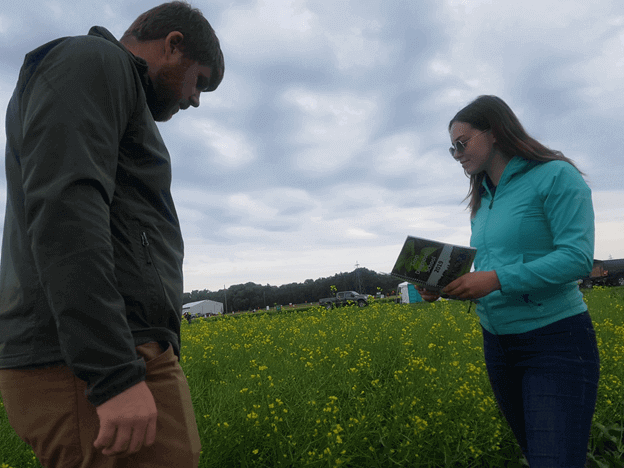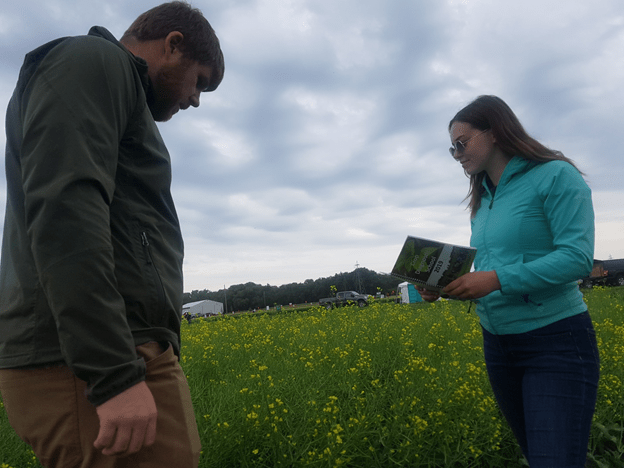Crop Diagnostic School – Time to Continue our learning!
Mar 25, 2019

We get many learning opportunities in the summer with summer field tours. One of the best we take advantage of is to go to Carman to Crop Diagnostic School, held at the Ian N Morrison Research Farm run by the University of Manitoba. Many University and Manitoba Agriculture staff spend 2 weeks teaching and answering questions from industry staff and farmers who attend a full day session. There are various topics and demonstrations including Oilseeds, Pulses, Weeds, Entomology, Pathology, Soil Fertility and Management. Every year is a different learning experience due to the fact we are up against different in-field challenges. The presenters address those challenges and make the learning relevant to what we are doing and seeing in our fields. We get to talk about and ask any questions we have to better understand what we are dealing with in fields in our area. Here is a quick snap shot of some of the things we talked about this year:
Oilseeds focused on the difference between canola seeded at different populations with both an air drill and a planter. We got a chance to do plant counts in the plots to see for ourselves the percent survivability and how the actual plant density compared to the target density.
Pulses touched on herbicides for Sunflowers. We ranked what each treatment or combination of treatments looked like for weed control. Hail damage recovery products were tested in dry beans, hail was simulated on some of the plots and rescue treatments applied to visually assess, maturity, stand density and disease severity. Foliar fungicides in field peas, we reassessed for stand density and risk factors to decide if a foliar fungicide should be considered. Intercropping rates and weed options were demonstrated for Peas and Canola also Peas and Oats.
The weeds section looked at a few different things. First was identifying trouble weeds and how some species can look different depending on the environment they are growing in. The second part was identifying herbicide damage on crops. There was a grid of crops to show the injury symptoms, or lack thereof from a select number of herbicides. Planted in the plots were wheat, oats, corn, flax, canola and soybeans. They also showed efficacy on several different weeds such as redroot pigweed, lamb’s quarters, green and yellow foxtail. We had to identify which herbicide treatment was applied where by looking at the symptomology on both the crops and weeds.
The entomology area had lots of insects for us to identify, both pests we had to deal with in the fields this year and beneficial’s present that help control them. We had to take a caterpillar quiz and identify 6 species found in crops in Manitoba. Grasshoppers were there to identify as well. We have 85 species in Manitoba with only 3 species being damaging pests in our crops.
Pathology demonstrated diseases in cereal crops, specifically seeding disease symptoms on wheat, Crown rust on oats with buckthorn being a host, and disease severity due to hail injury in corn.
Soil fertility and management compared appropriate ways to supply nitrogen to canola crops. This lesson incorporated 60 different combinations of source, placement and timing to supply 100lbs N/ac to canola. Many combinations can provide efficient use of N, but definitely not all succeeded. Regarding phosphorus management in canola and wheat, we have all heard about the 4R’s but we also talked about the 6B’s. 1. Build as a batch, 2. Build over 5yrs, 3. Balance by removal rates, 4. Balance by rotation, 5. Borrow, 6. Bring down or burglarize. Some crops in the plots were starved of nutrients on purpose. This allowed us to visually diagnose different nutrient deficiencies. We talked about when it is dry for a long time after seeding like it was in Carmen this year, how some temporary deficiencies will show up but once the roots have sourced that nutrient the symptoms can disappear or the crop just grows out of it.
This is always a full day of great learning from people who have a wealth of knowledge. You definitely get out of it everything you want to, as well as get all your questions answered.
